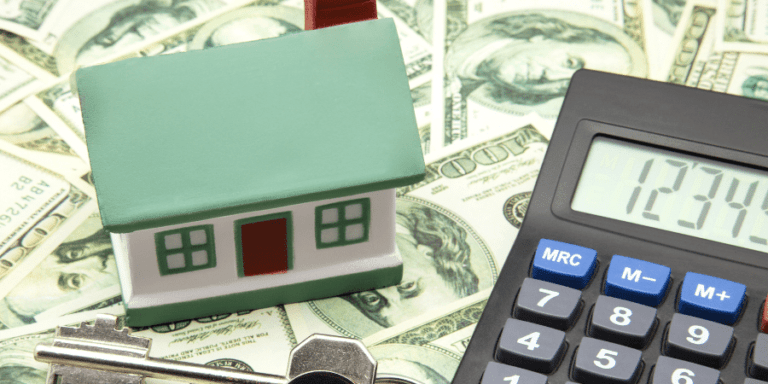HOW TO SELL A CAR WITH NEGATIVE EQUITY EASILY

The Basics
I’ve been fortunate enough in my vehicular history to avoid finding myself in the situation that would lead someone to this article. But, it occurred to me that many of my readers may, in fact, find themselves in this predicament as they work towards paying off their consumer debts. So I did some digging for you…
If you owe more on your car than the car is worth, you will need to cover the difference between the sale price and the loan amount. If you do not have this amount on hand, you will need to take out another loan of some kind to cover the difference.
Let’s look at this a little deeper.
What Is Negative Equity?
Let’s use two examples to better understand negative equity in relation to vehicles.
Ex. 1 – You own a car worth $5,000. You have a loan on this car and currently owe $3,000. When you sell your car, you will need to pay off the $3,000 loan. The remaining $2,000 is yours to keep.
$5,000 value – $3,000 loan amount = $2,000 equity
Ex. 2 – You own a car worth $5,000. You have a loan on this car and currently owe $7,000. When you sell your car, you need to pay the full $7,000 loan. You will need to cover the remaining $2,000 out of pocket.
$5,000 value – $7,000 loan amount = -$2,000 equity (negative equity)
Negative equity means you owe more on your car than the car is worth. You may hear people use terms like “upside down” or “underwater” to describe this situation.
How Do I Know I Have A Car With Negative Equity?
As you can see from the examples above, you’ll need to find two pieces of information to learn if you have a car with negative equity.
First, locate your loan information. You can probably do this online, or find it on a recent statement. If nothing else, call up your lender and ask. You are looking for the loan pay off amount.
Second, you need to know the value of your car in private sale. For this, most experts recommend referencing Kelley Blue Book. Chances are, when you list your car for sale, most buyers will immediately check here to see if your pricing is fair.
From there, finding your equity is just simple math like I showed above. Subtract your loan amount from your car’s value. If you come up with a negative number, you have negative equity in that amount.
How Did I End Up With A Car With Negative Equity?
If you learn that you are upside down on your car, I’d imagine you’d like to know how you got in this situation. Honestly, there are any number of reasons you may have wound up here. Let’s take a couple examples. Maybe one fits you.
First, you may have just overpaid. I’ll say right off the bat that if you bought your car new, and now want to sell it after a short amount of time, you essentially overpaid. (Some would say any new car purchase is overpaying.) See, that car’s value went down so far the minute you drove it off the lot that you probably very nearly started off upside down if you didn’t put down a hefty down payment.
Second, and related, you just didn’t put down a big enough down payment and got a loan with a long term. Your cars value just went down faster than the loan amount. Not much else to it. Your monthly payments were nice and low, but your car was dropping in value and stealing a little from your future car sale each month. You may notice car loans are often stated in months not years. But, 60 months is 5 years! Don’t let them fool you!
There could be some other, more complicated examples. But generally speaking, you end up with a car with negative equity when the value of your car goes down faster than your loan amount over time.
What Should I Do?
You really only have two serious options.
Option 1 – Keep the car and pay it off FAST. Then, drive it until you can afford to pay cash for something better.
Option 2 – If the payments are killing you and keeping you from making progress on your financial goals, sell the car. Remember, you’ll be responsible for paying the difference between the sale price and the loan. If you have cash, use it. If not, a personal loan from a local credit union might be a good option. My experience in working with my credit union has been that they are willing to work with you. You may get a better rate if you’re willing to sit down and talk it through with someone rather than filling out an application online.
Conclusion
If you’re really working to get out of debt and the car payments aren’t just killing you, the easiest option when dealing with negative equity is going to be to pay it off fast and keep the car.
But, if you really need to get out from under the loan, you will need to cover the difference between the sale price and the loan amount. If you do not have this amount on hand, you will need to take out another loan of some kind to cover the difference.
Hope that helps, and good luck working to pay off those debts!
And as always, regardless of your money goals, you can “Bank on a Budget” to get you from where you are to where you want to be!
Negative equity means you owe more on your car than the car is worth. You may hear people use terms like “upside down” or “underwater” to describe this situation.
Latest posts by Alex (see all)
- Financial Coaching Services - January 18, 2022
- TOP 10 PERSONAL FINANCE MYTHS THAT ARE HOLDING YOU BACK - February 26, 2021
- HOME BUYING EXPENSES CHECKLIST – 14 COSTS TO BE READY FOR - February 26, 2021







Anyone trying to get out of some car payments?